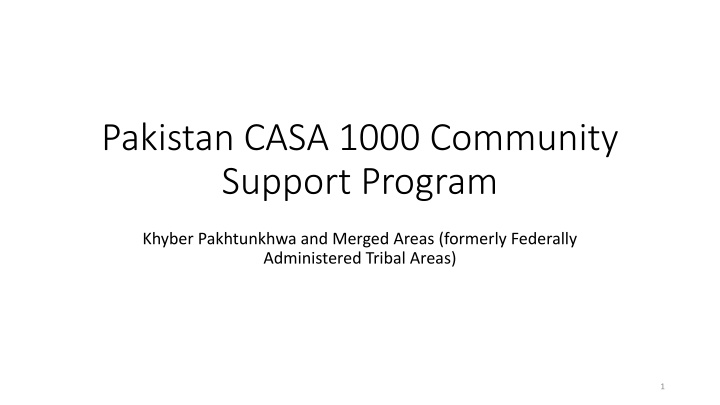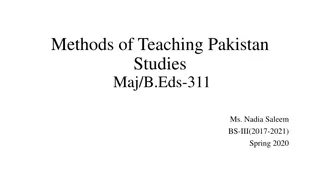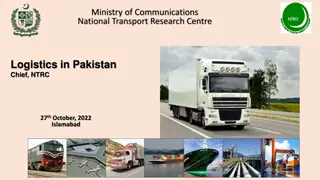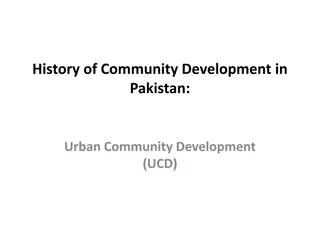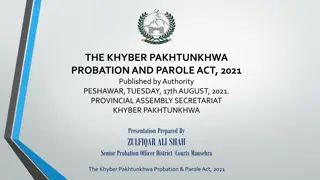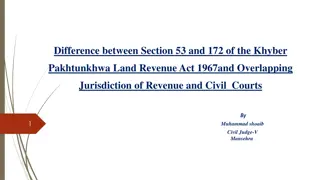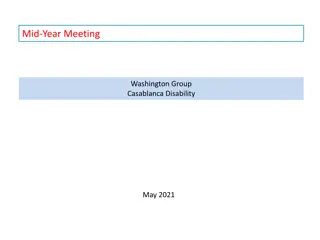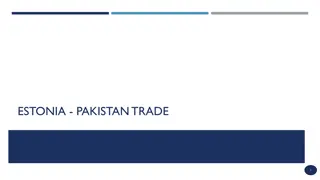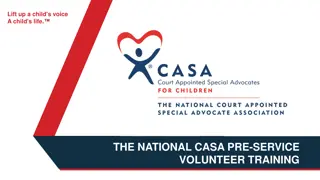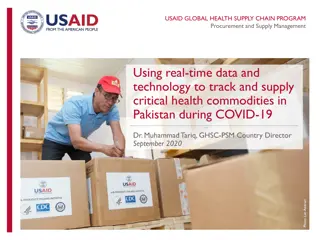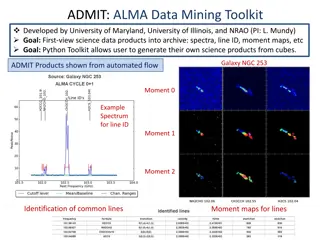Pakistan CASA-1000 Community Support Program in Khyber Pakhtunkhwa and Merged Areas
This project aims to improve access to local infrastructure and livelihoods in the project areas along the CASA-1000 transmission line. It focuses on communities within a four-kilometer-wide Corridor of Influence (CoI) and additional districts in FATA Merged Areas, addressing fragility, conflict, and violence challenges while supporting broader government strategies for socio-economic development.
Download Presentation

Please find below an Image/Link to download the presentation.
The content on the website is provided AS IS for your information and personal use only. It may not be sold, licensed, or shared on other websites without obtaining consent from the author.If you encounter any issues during the download, it is possible that the publisher has removed the file from their server.
You are allowed to download the files provided on this website for personal or commercial use, subject to the condition that they are used lawfully. All files are the property of their respective owners.
The content on the website is provided AS IS for your information and personal use only. It may not be sold, licensed, or shared on other websites without obtaining consent from the author.
E N D
Presentation Transcript
Pakistan CASA 1000 Community Support Program Khyber Pakhtunkhwa and Merged Areas (formerly Federally Administered Tribal Areas) 1
Project Background Project Background Period: Project will be under implementation in FY20-24 Amount: US$ 15 million (financed by the Pakistan MDTF for KP/FATA/Baluchistan) Implementing Agency: Directorate of Projects, Merged Areas Secretariat, Government of Khyber Pakhtunkhwa Project Objective: Improve access to local infrastructure and livelihoods in the project areas and strengthen community support for CASA-1000 transmission line Geographical coverage & scope: Communities located within a four-kilometer-wide Corridor of Influence (CoI) along the CASA-1000 transmission line Additional districts in FATA Merged Areas (Bajaur, Kurram, Orakzai, Mohmand, South Waziristan and North Waziristan ) 2
Fragility, Conflict and Violence (FCV) Fragility, Conflict and Violence (FCV) Issues of fragility, conflict or violence relevant for this project: Displacement: During 2009-2014, military operations launched against insurgency movements to damage to infrastructure and displaced three million people Lagging region: In tribal areas absence of visible progress and perceived lack of interest by authorities in addressing the disparities have deteriorated citizens trust in institutions Perceived unfairness: Mainly communities within the Corridor of Influence of the transmission line will receive benefits in the form of livelihoods support and community infrastructure schemes Transitional governance structure: Federally Administered Tribal Areas (Merged Areas) will be brought under the legal system and governmental authority by joining the neighboring Khyber Pakhtunkhwa Province Is the project part of a broader government strategy? Not directly. However, it is aligned with the Ten-Year Development Plan adopted in 2018 by the Governor s Special Committee on Socio-Economic Development of FATA and supports its vision to eliminate FATA s development deficit with respect to the rest of Pakistan. It is also aligned with the FATA Sustainable Return and Rehabilitation Strategy of 2015 and the socioeconomic development plan under the FATA-KP merger Reforms Package spearheaded by the FATA Reforms Committee. 3
Results Results N/A (project to begin implementation in FY20). Key results to be monitored: Number of households in the project areas benefiting from community infrastructure schemes financed by the project Number of community members in the project areas benefitting from livelihoods activities financed by the project Number of CASA-1000 CoI communities who express support to the transmission line 4
Challenges Challenges Previous CDD projects in FATA and KP have had a mixed record. They delivered basic services and livelihoods effeciently, but were undermined by significant implementation issues. Security constraints Reliance on external implementing partners Third-party monitoring Cancellation of other CDD projects in the region may have led to perceptions of unfairness about the distribution of development resources that need to be taken into consideration. This is being addressed by including additional districts of FATA in the project scope (going beyond the CASA 1000 Transmission Line Corridor of Influence) 5
Lessons Learned Lessons Learned What advice would you give colleagues in the room in terms of design and implementation? What would you do differently? N/A (project to begin implementation in FY20). 6
